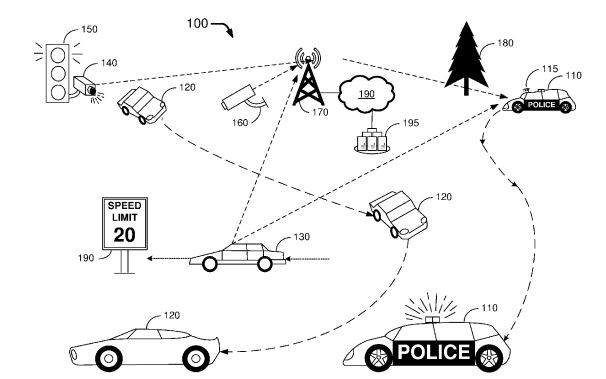Ford is working on a driverless police car that can issue speeding fines
The car can even engage in pursuits.
A patent filed by Ford that was recently published has revealed plans by the automobile manufacturer to build driverless police cars.
With all the hype surrounding driverless Ubers and taxis, it appears a downside of the technology is now rearing its ugly head. The patent shows a police car driving close to a regular vehicle and wirelessly transmitting speeding fines to the driver.
Once alerted, drivers will be asked to send a picture of their license to confirm the ticket goes to the right person, much like a human police officer asking once they've pulled you over. Strangely, it does not sound all that safe to be taking pictures and messaging while driving.
Ford's proposed driverless cop car will even be capable of high-speed pursuits. Although no one is in the car to take action, the driverless vehicle will be able to communicate with speed cameras and other police nearby while it monitors the offender.
Automated vehicle owners should be unaffected by the police cars as their speed limits are internally set. The patent was filed in 2016 and has now been published.

Ford is no stranger to pushing the limits. In November, the company announced it would fit workers with an exoskeleton to prevent injury through repetitive action. The futuristic workwear is the result of a partnership between Ford and Esko Bionics.
The "EksoVest" can be worn by workers between five feet and 6 feet 4. It will add a maximum of 15 pounds of strength to each arm. It will be tested in two plants in the US, before moving to sites in Europe and South America.
Ford Michigan plant worker Paul Collins said there was a genuine need for the equipment. "When I get home my back, neck and shoulders usually hurt," Collins said. "Since I started using the vest, I'm not as sore, and I have more energy to play with my grandsons when I got home."
The car company also announced plans for a trucker cap that can help keep drivers awake on long hauls. The heavy-truck division of Ford Brazil made the "Safe Cap" so truck drivers could be told to take a rest and potentially prevent serious crashes. Ford loaded the hat with an accelerometer and gyroscope to sense when the driver's head starts to nod off.
Smart cap wearers are woken up by a combination of the hat vibrating, creating sounds and flashing lights. Ford has spent eight months testing the hat on several drivers. Safe Cap is a partnership project with Sao Paulo-based creative company GTB.






















